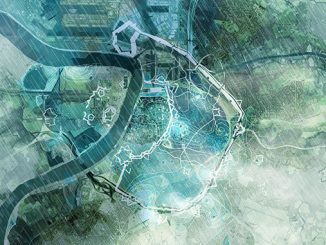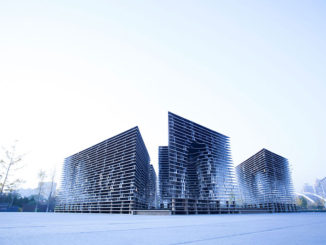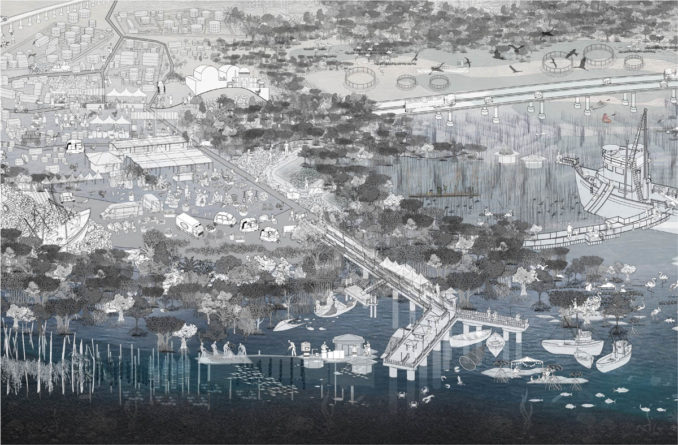
Rapid urbanization and population growth over the last century have resulted in many significant problems and challenges for the Eastern Waterfront of Mumbai, India. The rapid changes due to industry necessitate adaptive processes while still learning from generations of intimate knowledge with the sea. This project examines Mumbai’s Eastern Waterfront, which has a coexistence relationship with Koliwada village life, the area’s unique ecological habitat, and heavy industry. The project explores a unique form of documentation and captures the complex, dynamic, and intertwined spatial and material relationships of the site. It also recognizes the site’s cultural context and its people’s way of life by introducing a design movement that builds on indigenous and vernacular infrastructure to generate sustainable, resistant, and nature-based technology. The project aims to rethink and reconsider the land’s interface with the water, which plays an important role in the villagers’ livelihood and cultural and spiritual practices.
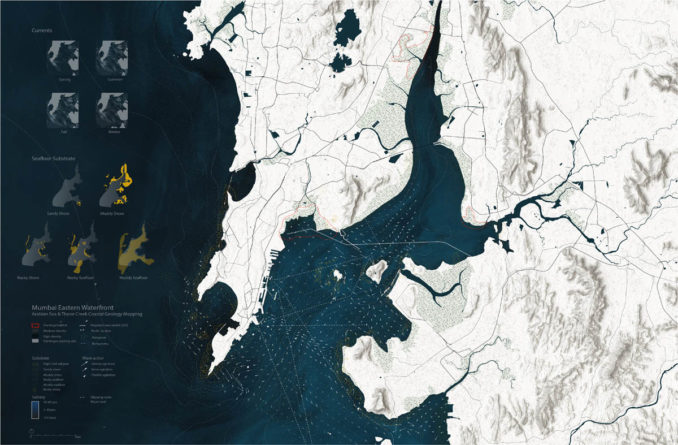
The Mumbai Eastern Waterfront is one of the largest ports in the city; it is approximately 1800 acres in area and is the site of industrial activities, port activities, and formal and informal housing. All these activities are causing pollution outflow into the water, damaging the ecological habitat.
In response to the current issues, the design explores a series of lo-tech interventions used to rethink the shoreline through pollution and treatment, culture and production, and recreation and ecology. The lo-tech design provides a self-sustaining or self-constructed model that helps local residents have a better quality of life with respect to their culture and the environment they are living in and provides a way to improve informal settlements and develop solutions that address current social and ecological challenges.
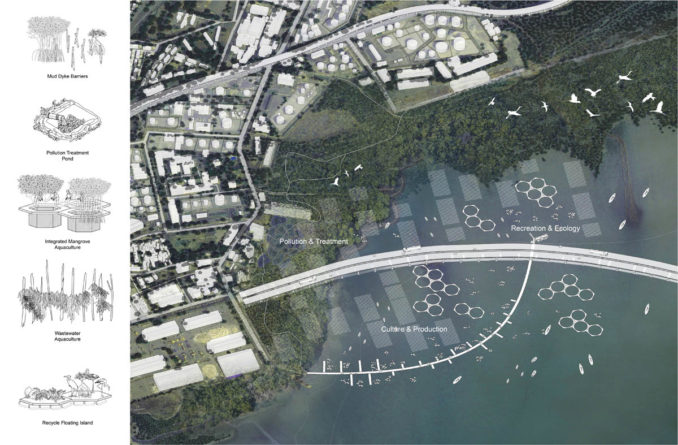
The first phase is to create a buffer along the shoreline by inserting a mud dyke barrier to prevent erosion as well as to restore the mangroves. The second phase involves providing wastewater treatment at the outflow area through aquaculture and algae farming while taking advantage of pollutants to introduce a new form of economic reliance and to use wastewater as a resource for aquaculture production. The integrated mangrove aquaculture provides opportunities to create a network of fish farms within the mangrove to provide nutrients for the fish and shelter for fishing. Further, a new place for gathering should be built by extending the existing dock, and a series of floating islands made of recycled materials that are adaptable and flexible to the monsoon season should be created.
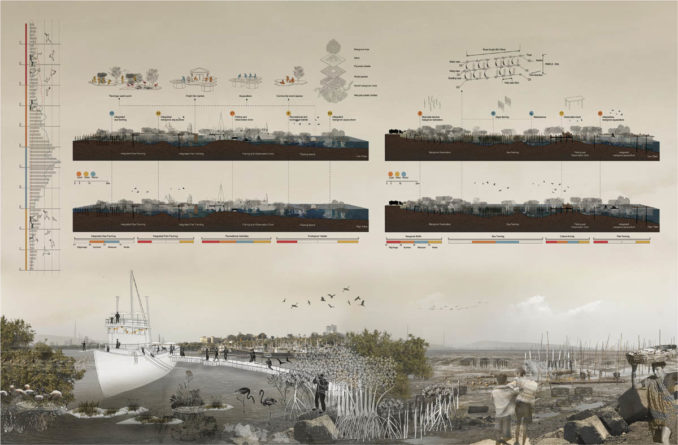
This project explores a way to study a site through documenting, recognizing, reconsidering, and highlighting the adaptive process. It respects local cultures and ways of living while learning from generations of intimate knowledge of the sea. This design is not a master plan that instructs the locals on what is going to happen; instead, it demonstrates potential opportunities for the locals to improve their quality of life while respecting their culture.
Adaptive Traditions of the Eastern Waterfront of Mumbai, India
Image Credits: Zixin (Sing) Chen
Student: Zixin (Sing) Chen, University of Toronto John H. Daniels Faculty of Architecture, Landscape and Design
Supervisor: Liat Margolis


